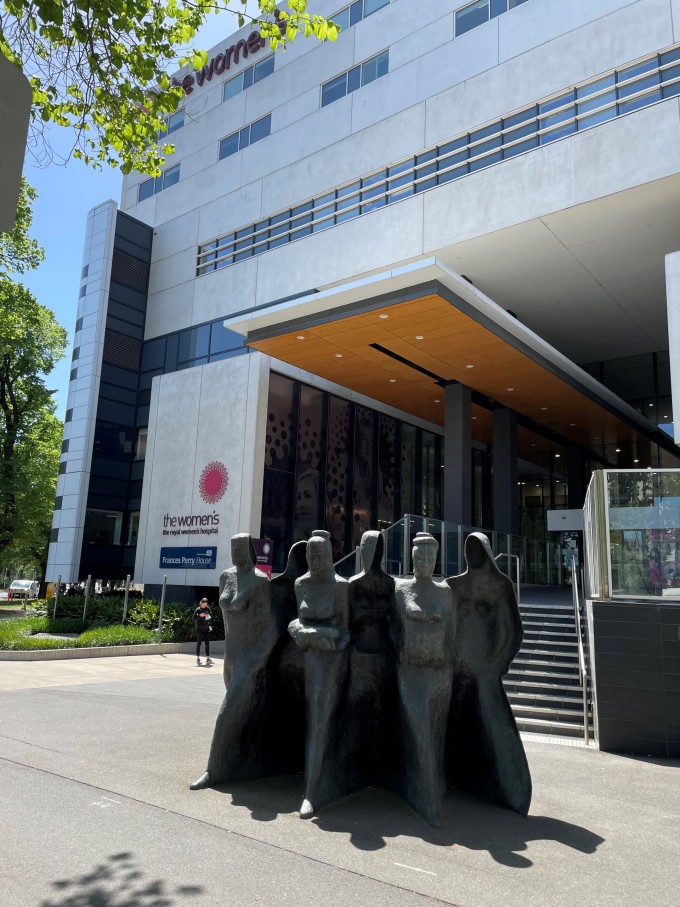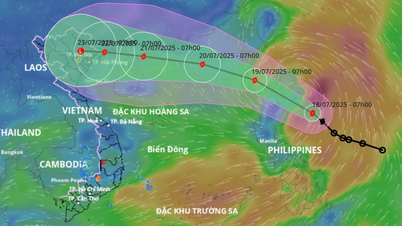When pregnant and giving birth while studying in Australia, international students need to pay attention to insurance and visa regulations to save costs and have a convenient life.
Truong Chau, a PhD student at Swinburne University, shares her experiences and tips for international students, after giving birth twice in Australia:
Health insurance for international students
OSHC (Overseas Student Health Cover) is health insurance, required for international students when applying for a visa in Australia.
Chau came to Australia with her husband so she bought OSHC Couples insurance, which is currently around 4,000 AUD, equivalent to 64 million VND a year. If traveling alone, international students only need OSHC Singles insurance for 600 AUD. After giving birth, the mother must add the baby to her package within 60 days, to upgrade to OSHC Family at a cost of around 8,000 AUD a year. If you are a single mother, buy OSHC Single Parents, which costs half as much.
OSHC has a 12-month waiting period for maternity leave from the date you arrive in Australia on your student visa. If you are less than 12 months in, you will not be covered for the cost of prenatal care, delivery and postnatal care. This cost is around AUD 13,000 (VND 208 million) if you choose a public hospital and have no health problems.
Overseas students with OSHC receive the same health care as local students. Typically, you pay for medical services in advance and then ask your insurance company to pay later. This is usually quite easy and can take just a few days, or up to two weeks.
Specifically, OSHC insurance will cover part of the cost of prenatal check-ups, tests, ultrasounds; pay all fees when the mother is hospitalized, gives birth, postnatal care costs and vaccinations for the baby.

The Royal Women's Hospital in Melbourne, Australia. Photo: Thoại Giang
Choose a place to see a doctor and give birth
When planning to have a baby, Chau went to see a family doctor (General Practitioner) for advice on diet and vitamin supplements. After becoming pregnant, she went to see them for prenatal care advice. The advantage of this is that there is no long wait, and the cost is low. For example, the cost of seeing a Vietnamese family doctor is 50 AUD per visit, with insurance covering 41 AUD. Meanwhile, if you go to a hospital for a prenatal check-up, you usually have to wait 1-2 hours, with a cost of 300-400 AUD per visit, and insurance only covers 41 AUD.
However, when the pregnancy is about 20 weeks old, they will advise the pregnant woman to go to the hospital for convenient monitoring and preparation for birth. Hospitals also have very useful prenatal classes.
Because she has OSHC (private insurance), Chau was advised to go to a private hospital. If she is in good health, the examination time is only 5 minutes. If you or your baby have any risks, you can take longer, have more frequent visits and have more tests and ultrasounds. This is also an opportunity to talk to your doctor if you have any questions or concerns. However, Chau had to pay 2,000 AUD out of pocket for the obstetrician.
When she was pregnant with her second child, because she knew where to go and to save money, Chau chose to give birth in a public hospital. But reputable public hospitals like The Royal Women's Hospital in Melbourne are always full, so you usually have to be in the designated area (a designated area near the hospital) to be admitted. The advantage of these hospitals is that they can promptly handle complications, if any.
The length of stay in the hospital depends on the health of the mother and baby. If you have a normal birth, most people only stay one night, and if you have a cesarean section, you will stay three nights.
How to get birth certificate and visa?
After giving birth, you must register your child’s birth in Australia as soon as possible because it takes 4-6 weeks to get a birth certificate. After that, you must register your child’s birth certificate and Vietnamese passport. You do not need to apply for a visa for your child, but you must contact the Australian Immigration Department and update your child’s passport into the system so that your child can have a visa with his or her parents and stay in Australia legally.
Regarding nationality, Chau and his wife both have Vietnamese nationality, so their two children also have Vietnamese nationality, are granted Vietnamese passports and are exempt from visas when returning to the country.
Generally, the residency status of a child born in Australia depends on the visa status of the parents at the time of birth. If one parent is an Australian citizen or permanent resident, the child will be granted Australian citizenship. Where the parents have different visas, the child will be granted the same visa as the father if the father’s visa is better or vice versa.
Consider postponing the course
If you are pregnant and have a baby and your health is not good, you can apply for a deferment of your course, up to 3 months. However, if you do so, it will take you longer to complete your course than originally planned and you may have to apply for an extension of your student visa. So consider this when applying for a deferment.
If you are in good health, you should not take such a long leave. If you need a few more days to complete your school assignments, you can request an extension without having to postpone. Of course, the school will require you to provide a doctor’s or hospital certificate.
Thoai Giang (written)
Source link











![[Video] More than 100 universities announce tuition fees for the 2025–2026 academic year](https://vphoto.vietnam.vn/thumb/1200x675/vietnam/resource/IMAGE/2025/7/18/7eacdc721552429494cf919b3a65b42e)


















































































![[Infographic] In 2025, 47 products will achieve national OCOP](https://vphoto.vietnam.vn/thumb/402x226/vietnam/resource/IMAGE/2025/7/16/5d672398b0744db3ab920e05db8e5b7d)





Comment (0)